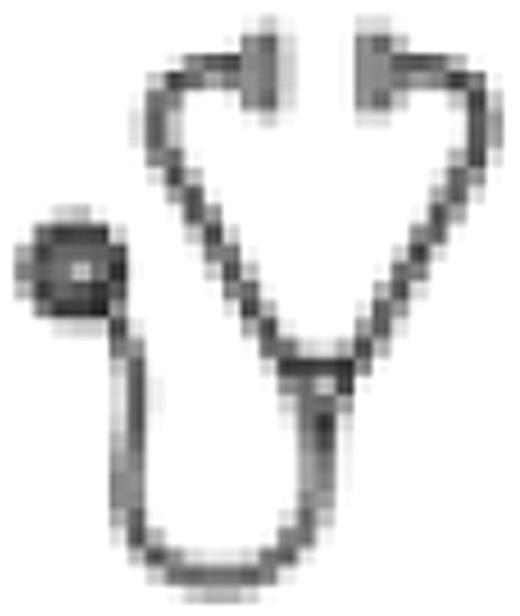Abstract
Abstract 4493
Acute GVHD involving the gastrointestinal tract is now the major cause of non-relapse mortality following allogenic transplant. Diagnosis remains problematic for some patients with pathology in the mid-gut; there is significant sampling error with mucosal biopsy; we lack objective measures of physiologic improvement or worsening in the gut; and duration of immune suppressive therapy remains imprecise. To address these issues, we have serially evaluated intestinal pathology in patients with acute GVHD using a reproducible ultrasound technique as a proof of principle study. Specifically, we examined the hypothesis that contrast-enhanced ultrasound (CEUS) could detect an enhancement of microcirculation during active intestinal acute GVHD as a diagnostic tool and that CEUS could be used to serially assess physiologic changes after treatment.
Four patients (pts) with hematologic malignancy (1 each with ALL, AML, mantle cell lymphoma, and myeloma) received a matched unrelated donor allogenic transplant after a myeloablative (N=2), reduced intensity (N=1), or non-myeloablative (N=1) conditioning. GVHD prophylaxis consisted of cyclosporine with either short course methotrexate (N=3) or mycophenolate mofetil (N=1). All patients developed biopsy-proven intestinal GVHD that was steroid refractory in 2 patients. At GVHD onset, patients were scanned with transabdominal ultrasonography and subsequently by CEUS using a linear phased-array 7.5-MHz transducer. A second generation echo-contrast agent (SonoVue®, Bracco), which consists of microbubbles stabilized by phospholipids and filled with sulphur hexafluoride, was injected i.v. as a bolus (2.4 mL) followed by 5 mL saline flush. Microbubbles have a mean diameter of 2.5 μm and remain within the vascular space allowing real-time imaging of microcirculation.
In all patients, routine ultrasonography revealed mucosal edema involving the terminal ileum in 3 patients (wall thickness 5.1, 5.8 and 7.9 mm) and the colon in 4 patients (ascending colon 5.8, 6, 8.4 and 18 mm; transverse colon 6 and 12.6 mm; descending colon 11 mm). CEUS at GVHD onset showed an arterial phase (AP) complete enhancement of the entire wall section from the mucosal to the serosal layer (terminal ileum) in 2 patients. There was absence of enhancement only in the outer border of the muscularis propria in 1 patient (pt); there was absence of enhancement both in the outer and in the inner border of the colon wall and enhancement only of the intermediate layer in 1 pt. All patients showed late parenchymal phase (PP) wash out. These enhancement patterns have previously been described in active Crohn's disease (Serra C. et al; 2007). CEUS follow-up findings on serial examinations: 1) allowed us to monitor residual disease in one pt after Infliximab, showing persistent AP enhancement of microcirculation suggesting residual GVHD activity which required further treatment with eventually complete remission; 2) CEUS showed normalization and/or decreased microcirculation enhancement in pts responding to treatment (N=2); 3) CEUS showed AP microcirculation enhancement when GVHD flared (N=2); 4) CEUS showed persistence of AP enhancement of microcirculation after Rituxan (4 doses 375mg/m2/weekly) despite a decrease in ileum wall thickness and in agreement with only a slight improvement of symptoms in one pt when GVHD flared, 5) CEUS showed no improvement of intestinal microcirculation wall enhancement in steroid refractory aGVHD patients who eventually died (N=2). In one of them there was persistence of AP phase enhancement despite improvement of symptoms suggesting still active disease.
Contrast enhanced US showed intestinal microcirculation wall enhancement and delayed washout at the onset of GVHD symptoms in areas of the intestine inaccessible to endoscopic evaluation. CEUS findings on serial examinations correlated with incomplete responses and flares of GVHD symptoms (microcirculation enhancement) and responses to therapy (decreased microcirculation activity). CEUS may be useful for both diagnosis and prognosis, as it provides both anatomic and physiologic information about intestinal GVHD. These findings prompted us to design a prospective study to evaluate clinical usefulness of CEUS in diagnosis and follow-up of intestinal acute GVHD.
No relevant conflicts of interest to declare.
Author notes
Asterisk with author names denotes non-ASH members.

This feature is available to Subscribers Only
Sign In or Create an Account Close Modal